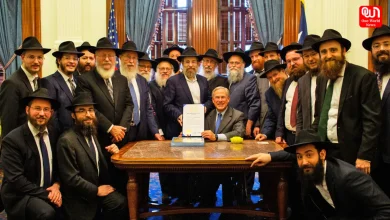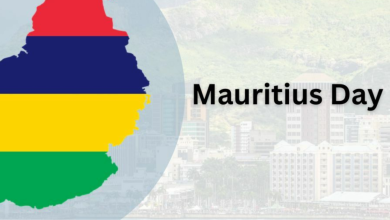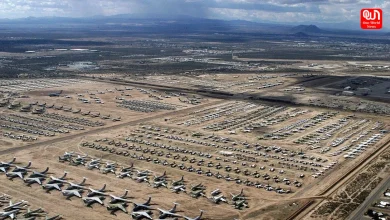Transformation Of Indian Highways Under Nitin Gadkari: The ‘Flyover Man’ Is On His Mission

India Will Meet It’s Highway Standard With The United States And European
The former Prime Minister of India, Atal Bihari Vajpayee, firmly believed that a robust transportation and road infrastructure is a way to the nation’s development. He directed India to build such an infrastructure that connects the major industrial and agricultural centers of India for better connectivity and to reduce the distance and time between the four mega-cities – Delhi, Mumbai, Kolkata, and Chennai. Atal Bihari Vajpayee led India to the country’s largest highway project – the Golden Quadrilateral, which became one of the economic powerhouses.
After the BJP returned to power in 2014, their vision for economic growth was clear, and they were ready to invest more in transportation and road infrastructure. As BJP formed the government, Gadkari was assigned to bring Vajpayee’s spirit and reform the transportation infrastructure in the country. From building record-breaking highways to introducing EV-friendly infrastructure, Nitin Gadkari emerged as one of the most successful and efficient leaders of the BJP government.
A Throwback To Gadkari’s Work
Born on 27 May 1957, Nitin Gadkari started his political career in 1980 after joining the BJP youth wing Janata Yuva Morcha. He was associated with ABVP and RSS in his early days, and his interest in politics started during his university days. He became the Member of the Legislative Council (MLC) in Maharashtra in 1989, and later in 1995, he served as the Minister of Public Works Department (PWD) under the Shivsena – BJP coalition government until 1999.
After being chaired as the PWD minister, Gadkari constructed the first of its kind in India Greenfield Mumbai – Pune Expressway, and 53 flyovers in Mumbai to ease the traffic in a record 4 years. He was famously called “Flyover man” for this commendable work. During his tenure, he connected 13,736 remote villages of Maharashtra with all-weather road connectivity in a record four years’ time.
Impressed with his work, then Prime Minister Atal Bihari Vajpayee appointed Nitin Gadkari the Chairman of the National Rural Road Development Committee. Between 1999 – 2005, he served as the Leader of Opposition in the Maharashtra Legislative Council. Thereafter he became State President in Maharashtra in 2005 and was elevated to the post of BJP’s national president in 2009.
Nitin Gadkari As The Union Road Transport Minister
After the BJP came to power in 2014, Nitin Gadkari was sworn in as the Union Road Transport Minister. From day one, Gadkari took the responsibility to reform transportation and match the status of Indian national highways with the USA and European standards. Under Gadkari’s direction, the country is achieving new heights and making new records.
Despite the COVID, India constructed 13,394 km of highways in the fiscal year 2020-21. Achieving a remarkable new record, Nitin Gadkari informed the media that the pace of highway construction touched a record 37 km per day, which was 16.5 km/day before he took over the Ministry. Under the BJP government, the length of National Highways has increased by 50%, from 91,287 km (as of April 2014) to 1,37,625 km (as of 20 March 2021). As per a release by PIB, the Ministry of Road Transport & Highways has approved the declaration of about 53,031 km length of national highways.
Your road trips may soon have fewer roadblocks… pic.twitter.com/9T3WMGmW1d
— Brut India (@BrutIndia) August 4, 2022
The BJP not only covered the big metro cities but the other important parts of India, such as the Northeast. The highway projects in the Northeast region went up by over twice the pace they were in the UPA government. Between 2014 and 2019, BJP built 2,731 km of national highways across 8 northeastern states, while the UPA managed to construct a mere 1,079.25 km from 2009-14. During the UPA regime, the construction rate was 0.6km per day, which increased to 1.5km per day between 2014 and March 2019.
The government has more future plans to push the transportation and road infrastructure further. On Wednesday, Nitin Gadkari told Rajya Sabhya that the government is building 26 green expressways in the next three years, and the infrastructure will be as good as the United States. In June this year, Nitin Gadkari said that the government is working towards expanding the National Highway network to 2 lakh kilometers by 2025, intending to construct 18,000km of highways in 2022-23 at a record speed of 50km per day.
Ambitious targets to fulfil the ambitions of New India!
Under the leadership of PM Shri @narendramodi ji, we are committed to expanding the NH network across the country with the aim of constructing 18,000 km of NHs in 2022-23 at a record speed of 50km per day. #PragatiKaHighway pic.twitter.com/TNBz9Da7fW— Nitin Gadkari (@nitin_gadkari) May 12, 2022
A Push Towards Sustainable Future
“With full faith, I want to say that petrol will vanish from the country after five years. Your cars and scooters will either be on green hydrogen, ethanol flex fuel, CNG, or LNG,” Union Minister Nitin Gadkari.
We have seen Nitin Gadkari talking about EVs and fossil fuel alternatives on several occasions. He pushes for a green alternative to petrol and diesel and pledges to build EV-friendly infrastructure. He also said that the price of EVs will be equal to petrol and diesel one soon. The government is also planning to introduce ethanol in construction and agriculture equipment to promote sustainable energy.
“Alternative fuel is the future. After electric scooters, cars, and buses, soon we will have electric tractors and trucks. I am going to launch these soon,” Gadkari said.
By 2030, the Indian government aims for 30% EV sales penetration for private cars, 70% for commercial vehicles, 40% for buses, and 80% for two- and three-wheelers. In 2015, Gadkari launched Faster Adoption and Manufacturing of Electric and Hybrid Vehicles (FAME) to push EVs in India.
In 2019, the government introduced the FAME II subsidy to promote green mobility and make two-wheeler electric vehicles more affordable. In September last year, the government revised the FAME II subsidy to 50% more at ₹15,000 per kWh from ₹10,000 kWh. The government then approved a ₹26,058 crore PLI (production-linked incentive) scheme to push domestic EV manufacturing.
The Bottom Line
Nitin Gadkari is changing the status of Indian roads. The country has seen a tremendous growth in construction of national highways and connectivity to the most remote places to the markets. The government is progressively working towards a sustainable future as well to fight the reliability of fossil fuels. With the record-breaking construction of highways, Nitin Gadkari has earned his reputation as a ‘doer’ among the people of India as well as the opposition.







